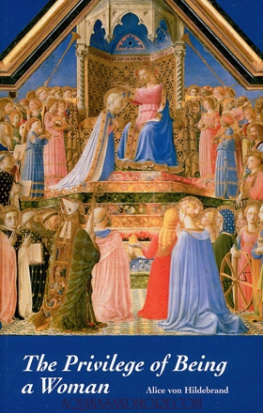Gendering Labor History
In Pursuit of Equity: Women, Men, and the Quest for Economic Citizenship in Twentieth-Century America
A Womans Wage: Historical Meanings and Social Consequences
Out to Work: A History of Wage-Earning Women in the United States
Women Have Always Worked: An Historical Overview
A Difficult Woman
The Challenging Life and Times of Lillian Hellman
ALICE KESSLER-HARRIS

Copyright 2012 by Alice Kessler-Harris
Electronic edition published in April 2012
All rights reserved. No part of this book may be used or reproduced in any manner
whatsoever without written permission from the publisher except in the case of
brief quotations embodied in critical articles or reviews. For information address
Bloomsbury Press, 175 Fifth Avenue, New York, NY 10010.
Published by Bloomsbury Press, New York
LIBRARY OF CONGRESS CATALOGING-IN-PUBLICATION DATA
Kessler-Harris, Alice.
A difficult woman : the challenging life and times of
Lillian Hellman / Alice Kessler-Harris.
p. cm.
Includes bibliographical references and index.
ebook: 978-1-60819-379-0
1. Hellman, Lillian, 19051984. 2. Dramatists, American20th century
Biography. 3. Hellman, Lillian, 19051984Political and social views. I. Title.
PS3515.E343Z74 2012
812.52dc22
[B]
2011028065
First U.S. edition 2012
www.bloomsburypress.com
For Emma and Molly and Jake
and
For Daniel and Eddie and Callie
With hope and joy and love
If a man could say nothing against a character but what he can prove, history could not be written; for a great deal is known of men of which proof cannot be brought.
John Boswell, The Life of Samuel Johnson
In 1976, aged seventy-one, playwright and memoirist Lillian Hellman posed in a mink coat for a resonant advertisement. Cigarette in hand, gazing insouciantly at the camera, Hellman claimed the legendary status she craved. Her flirtatious stance, self-confident amid the wrinkled features, her posture at once brazen and enticing, Hellman gazed directly at the viewer. The advertisement did not reveal the name of its model. It did not have to. Everyone who read Vogue and the New Yorker and the other magazines in which the advertisement appeared would know that this was Lillian Hellman. She was at the peak of celebrity. In addition to a fistful of plays whose names were well known, she was a heroine to young women who adored her two bestselling memoirs. A star-studded celebration of her seventieth birthday had recently been covered in all the society pages. Just months before the advertisement appeared, Hellman published her third volume of nonfiction, Scoundrel Time. So controversial was that volume, and so divisive, that when the mink coat advertisements hit the stands, Hellman had already begun her long decline from the pinnacle of fame to the depths of notoriety.

1976: Everyone would know that this was Lillian Hellman. (Image courtesy of The Advertising Archives)
What was it, I wondered as I started on this book, that made Hellmans life matter so much to so many? To be sure, it traversed most of what historian Eric Hobsbawm has labeled the short twentieth century, the period that saw the rise and demise of the communist Soviet Union. Her life reveals the multiple tensions within which every politically engaged American juggled options and choices during that challenging period. Hellman was born in 1905, came to maturity with the flapper generation of the 1920s, learned her politics in the Depression-era thirties, became a celebrity playwright and movie scriptwriter during World War II, when America needed heroes, and earned her stripes in the struggle against McCarthyism in the early fifties. She survived blacklisting to become an idol of the New Left and the second wave of the womens movement, only to succumb to red-baiting and character assassination at the end of her days. She was, and is still, dragged from the grave to serve as an example of the perils of mendacity. But her words are still quoted, her plays are regularly revived, and her example still inspires.
It was hard to believe that this complicated and forthright woman had come to such a bad end in the popular imagination. Like many of my contemporaries, I readdevoured would be more accurateLillian Hellmans autobiographical work as it appeared in the late sixties and early seventies: An Unfinished Woman in 1969, Pentimento in 1973, and then Scoundrel Time in 1976. These memoirs, which deeply moved me at the time, drifted into obscurity in the wake of continuing accusations that they reflected more fiction than fact. More than a quarter century after her death her name still evokes bitter feelings. How had it happened, I wondered, that Lillian Hellman, once so honored and famous, admired for her blunt and plainspoken style, had become the archetype of hypocrisy, the quintessential liar, the embodiment of ugliness? How was it that she was so widely remembered as a rigid Stalinist, an angry woman, a greedy, self-aggrandizing individual in a world where so many others had committed many of the same sins? Why had these characterizations, this negative reputation and the controversy that swirled around her, so long survived her death in 1984? This book tries to answer these questions not by reassessing her character but by thinking through her relationship to the twentieth century. The questions that trouble me are not so much about her psychic dimensionsthe traditional subject of the literary biographeror even about the soil from which she grew, the question most often raised by the historical biographer. Rather, I wonder about what is to be learned from the surviving images of Lillian Hellman, from the sharp disjuncture between the glamorous and celebrated playwright and the ugly woman of popular memory.
The answers to these questions seem to me to lie in the historical drama within which Hellman acted her part: in the multifaceted and politically splintered America in which she spent her days. In Hellmans lifetime, America fought several wars for democracy and freedom abroad, yet engaged in extended episodes of political repression at home. Her life engaged a century during which women strode toward economic and political equality, yet remained constrained by popular images of beauty and models of traditional family relationships. This was a century when celebrity conferred fame, money, and standing, of which Hellman had her full share, yet it placed its recipients in the glare of constant publicity, turning them into public property. At the centurys start, the nation challenged immigrants to assimilate by eliminating differences of language and culture; by its end, it encouraged pride in multiculturalism and unique qualities of ethnicity and identity. During the twentieth century, efforts to achieve the good life for every citizen yielded remarkable success, but they also produced an arrogant stance in the world. The twentieth century pitted two competing ideological systems against each other, fostering intense conflicts about the meaning of loyalty and the definition of virtue.
Lillian Hellman, as a historical figure who faced difficult choices, lived in a century sharply divided by ideology and morality. Repeatedly she made decisions about where to locate her political allegiance; how to construct her life as a woman in a world that limited womens aspirations; what it meant to live as a Jew, a southerner, a writer at a time when these identities all carried gender, economic, and political connotations that she only half understood and sometimes explicitly rejected. These issues could not be neatly separated. Her identity, her friendships, her sexuality, her writing, and her politics sustained and infected each other, producing an amalgam that was at once idiosyncratic and complicated and very American.








